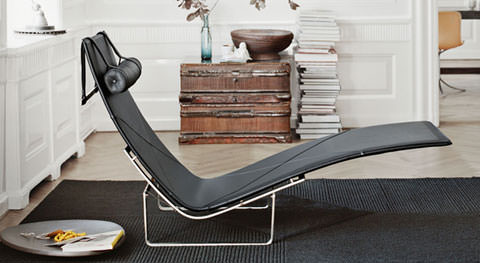Poul Kjaerholm - Cabinetmaker to Modernist Icon - Final Part
The PK 24 Chaise Longue was finally realised in 1965 and was easily his most graceful and sculptural effort yet. Again, reflecting earlier design periods, the initial concept behind this piece hailed from the Rococo period and the original French ‘Long Chair’. His method of layering elements is present but here they are left independent from each other, with the swooping seat just resting upon the base which allows the seat position to be adjusted along steel runners to suit individual comfort requirements. I think the lines and shapes of the PK 24 conjure up all manner of images in people’s minds but, personally, when facing the profile of this chair, I always see a breaking wave of cane and steel rolling past. Kjærholm often referred to his design as the “Hammock Chair”, to reflect its function of suspending the body between two fixed points. The seat is finished in wicker or leather and the leather head-roll cushion was, again, an independent element which could be adjusted to suit your height by simply dropping or raising the steel counterweight suspended over the rear of the chair by two leather straps.
The PK 20 Lounge Chair appeared in 1968 and it was to be his first cantilevered chair design. Again, it has a “Miesian” influence within its marrow hailing from the Tugendhat Chair of 1930, yet it also feels like it was a continuation of the fluidity of his own PK 24 design a few years earlier. The seat was offered in cane or formed of a leather slip cover which was pulled over the upright side bars, much like the format of the PK 22 Chair. But, the sprung steel, cantilever frame was a new direction for Kjærholm which seemed so loose and unbound in appearance compared to previous frame structures he had produced. Was there a slight nod to the Bauhaus tutor, Paul Klee, at the drawing board stage by Kjærholm “taking a line for a walk” with his pencil to create those beautiful curling and uninterrupted lines? He also produced a version with a slightly higher back, which also incorporated a roll-cushion head rest, and this model became known as the PK 20 Easy Chair.
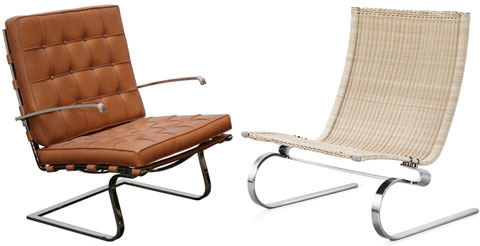
Left: Mies van der Rohe's Tugendhat Chair. Right: the PK20 Chair
Through the 70’s, Kjærholm’s output slowed somewhat compared to the volume of designs he was producing throughout the previous decade. His PK 27 Lounge Chair (with a rare use of maple wood for the frame) picked up two Danish design awards in ‘71 and ‘72 and a cantilevered arm chair (with a return to his material of choice: brushed steel) appeared in ’74 – the PK 13.
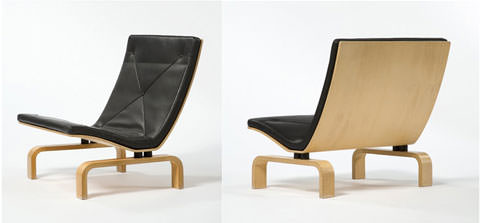
The PK27 Lounge Chair
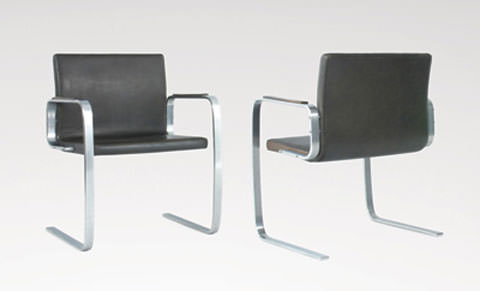
The PK13 Cantilever Chair
In 1975, Kjærholm was approached by Knud V. Jensen, Director of the Louisiana Museum of Modern Art in Denmark, who commissioned him to design seating for a proposed new concert/lecture hall at the museum. The concert hall was to be a square space with raked seating so the passage of the congregation between the rows and the consideration of acoustics was of course vital. Kjærholm worked closely with the architect of the concert hall, Vilhelm Wohlert (who also designed the original museum) and acoustician, Jørgen Petersen, to conjure up a folding seat that would sit comfortably with the white wall and dark mahogany floor scheme. He fought hard to avoid using an upholstered seat because that would of course hide the build of the seat: not his style. So, he developed a simple wooden construction formed of square maple frames for the seat and back which contained strips of woven maple that not only provided a pliant surface for the user but also worked acoustically. The seating was installed in 1976 and Kjærholm duly picked up another award the following year from the Danish Furniture Manufacturers Association for his Louisiana Chair, as it came to be known.
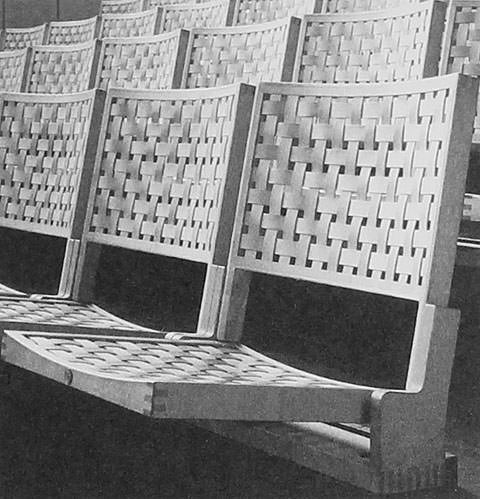
Towards the end of 70’s, whilst still producing work such as a prototype for the PK8 Dining Chair (which eventually reached full production status many years later in 2007) and the PK65 Low Table, Kjærholm’s health began to suffer. In early 1980, he was diagnosed with lung cancer and passed away soon after on the 18th of April at the age of 51.
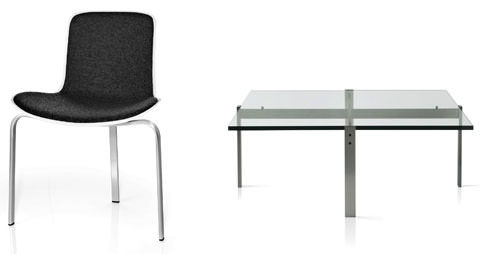
Left: the PK8 Chair. Right: the PK65 Low Table
A life cut cruelly short but over that 30 year career span, he has left us a legacy of work that although originally intended to appeal to the masses - financially and aesthetically – has, ironically, vaulted into an exclusive and revered class of its own.
I’ll finish with a quote from the American architect and Poul Kjærholm expert, Michael Sheridan, which very eloquently sums up the ethos behind Kjærholm’s work:
“Like Janus, the Roman god of gates and doorways who looked backwards and forwards at the same time, Kjærholm worked on the threshold between two epochs; Danish craftwork and industrial Modernism, straddling the past and the future and making furniture and spaces that have transcended time.”
A big thank you must go out to Janne Nyegaard and Patrick Fairfield from Fritz Hansen for their invaluable assistance and, of course, Michael Sheridan whose book Poul Kjærholm: Furniture Architect has been an invaluable source of reference in compiling this biography.
MYLES BROWN (c) 2014

